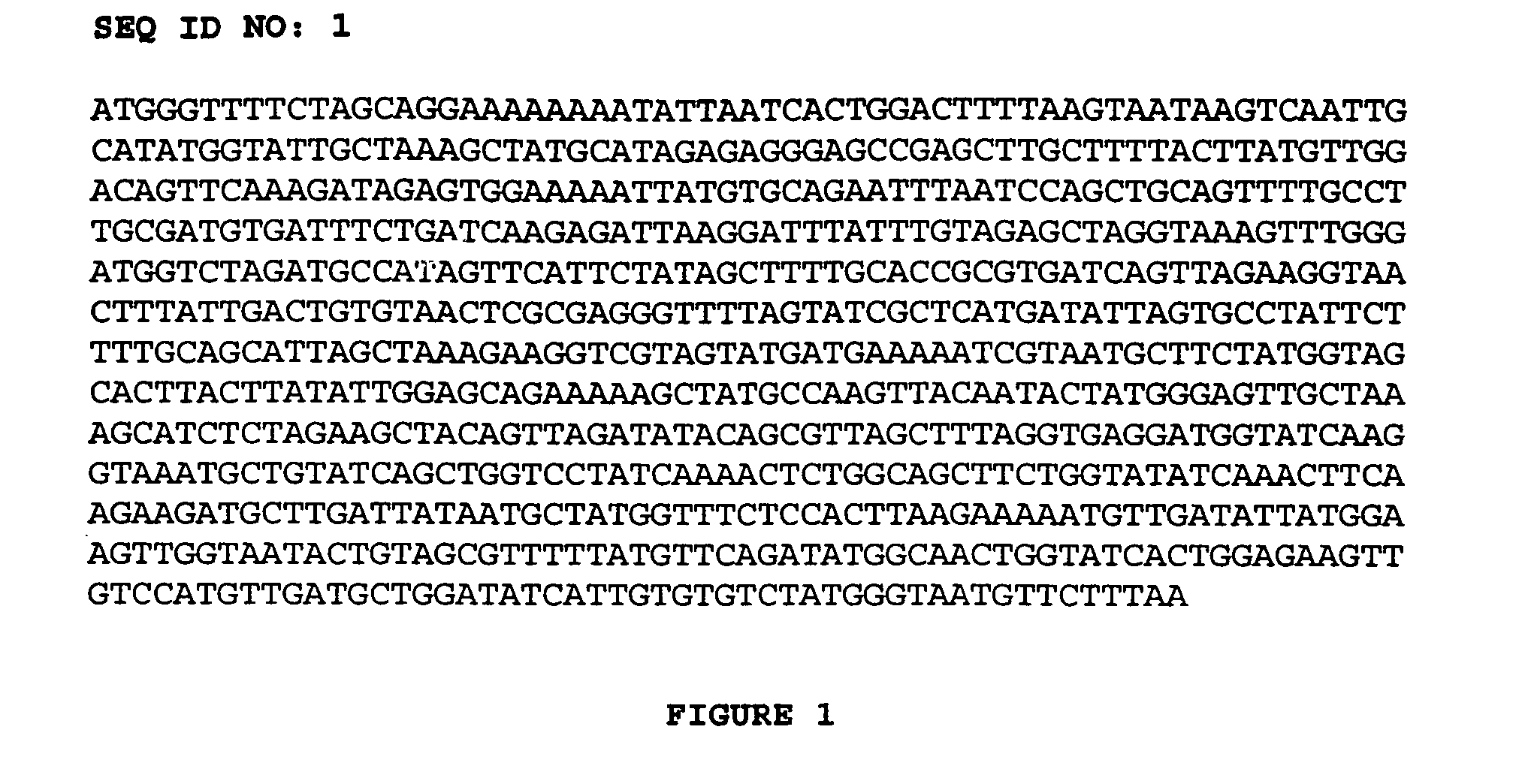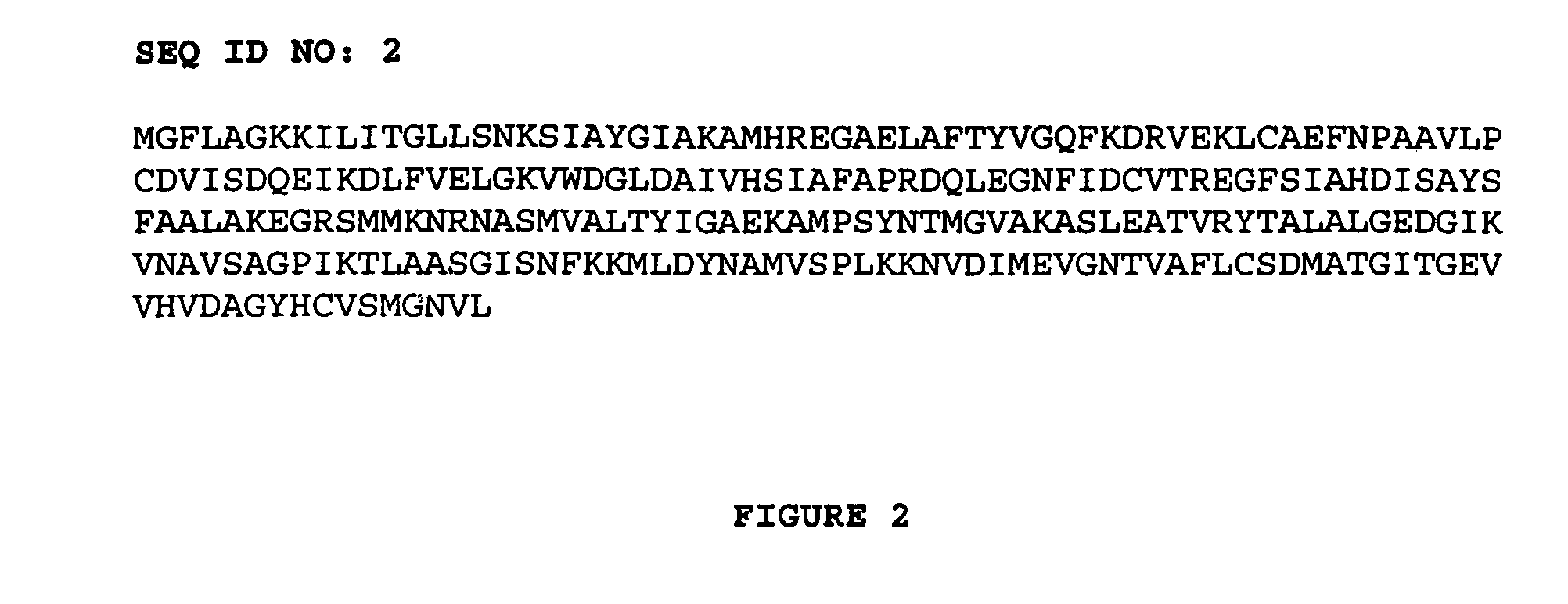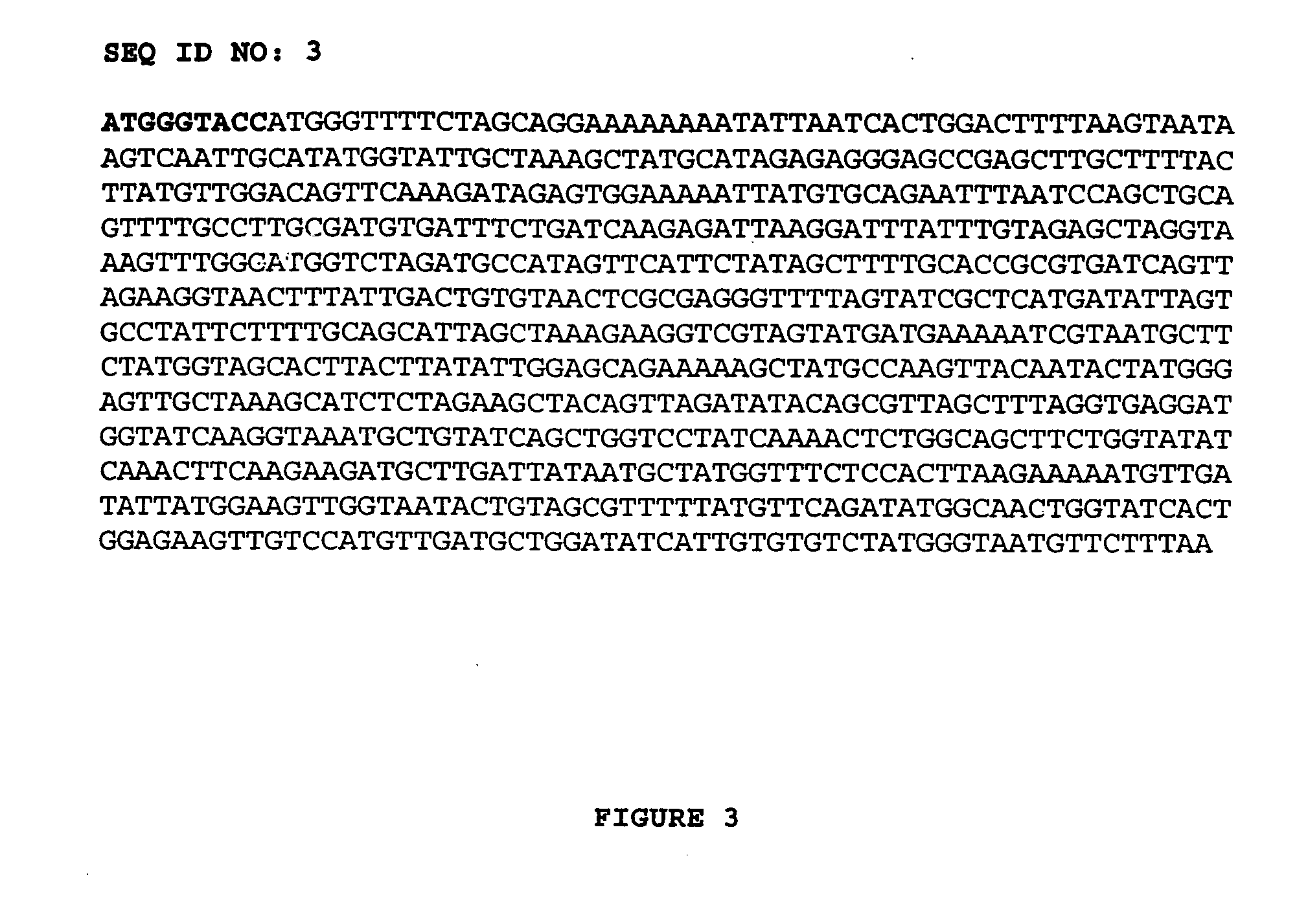Novel purified FabI polypeptides from fransicella tularensis
a technology of fabi polypeptides and fransicella tularensis, which is applied in the field of discovery of novel antimicrobial agents, can solve the problems of limited number of protein targets for antimicrobial drugs, serious crisis worldwide, and high mortality rates of infectious diseases, and achieve rapid discovery and design of therapeutic and diagnostic molecules
- Summary
- Abstract
- Description
- Claims
- Application Information
AI Technical Summary
Benefits of technology
Problems solved by technology
Method used
Image
Examples
example 1
Isolation and Cloning of Nucleic Acid
[0595]The nucleotide sequence of the F. tularensis FabI gene was identified within genome sequencing project results available at artedi.ebc.uu.se / Projects / Francisella by tblastn analysis using the E. coli protein sequence. Oligonucleotide primers were designed to allow expression of untagged, amino terminal his-tagged, and carboxyl terminal his-tagged proteins using the pPW2 and pPW4 expression vectors. The sequences for the oligonucleotide primers are shown in FIG. 15 (SEQ ID NOs: 31 and 32). These primers were used to construct N-terminal His-tagged F. tularensis FabI (hisFt FabI) in the pPW2 vector, untagged F. tularensis FabI (Ft FabI) in the pPW4 vector, and C-terminal His-tagged F. tularensis FabI (C-hisFt FabI) in the pPW4 vector.
[0596]PCR reactions for each nucleotide sequence were performed using 1 uL of resuspended heat killed F. tularensis lyophilized cell pellet (Francis Nano, BC, Canada) and 2 units of high fidelity Platinum Pfx (in...
example 2
Cell Growth and Solubility
(a) Cell Growth
[0599]BL21(DE3) E. coli cells containing expression plasmids were grown at 37° C. to an OD600 of approximately 3.82 in 1 L of Terrific Broth supplemented with 100 ug / mL ampicillin (hisFt FabI), or 50 ug / mL kanamycin (Ft FabI, C-hisFt FabI). The temperature was reduced to 15° C. and IPTG was added to a final concentration of 0.5 mM. The cells were incubated for 16 hours and harvested by centrifugation at 3000 rpm (Beckman J6M). Cells containing native expressed proteins were resuspended in lysis buffer (50 mM Tris pH 7.5) containing 0.5 mM PMSF and 1 mM benzamidine, and cells containing his tag fusion proteins were resuspended in binding buffer (50 mM HEPES pH 7.5, 500 mM NaCl, 5 mM imidazole, and 5% glycerol) containing 0.5 mM PMSF and 1 mM benzamidine. Cell suspensions were stored frozen at −70° C.
(b) Method One for Determining Protein Solubility Levels
[0600]The cells are harvested by centrifugation and subjected to a freeze / thaw cycle. The ...
example 3
Native Protein Expression
[0602]The expression construct clone encoding the soluble polypeptide having the amino acid sequence of SEQ ID NO: 4 is introduced into an expression host. The resultant cell line is then grown in culture. The method of growth is dependant on whether the protein to be purified is a native protein or a labeled protein. For native and 15N labeled protein production, a Gold-pUBS520 (as described above), BL21-Gold (DE3) Codon-Plus (RIL) or (RP), or BL21 STAR E. Coli cell line is used. For generating proteins metabolically labeled with selenium, the clone is introduced into a strain called B834 (Novagen). The methods for expressing labeled polypeptides of the invention are described in the Examples that follow.
[0603]In one method for expressing an unlabeled polypeptide of the invention, 2 L LB cultures or 1 L TB cultures are inoculated with a 1% (v / v) starter culture (OD600 of 0.8). The cultures are shaken at 37° C. and 200 rpm and grown to an OD600 of 0.6-0.8 fo...
PUM
| Property | Measurement | Unit |
|---|---|---|
| Fraction | aaaaa | aaaaa |
| Fraction | aaaaa | aaaaa |
| Mass | aaaaa | aaaaa |
Abstract
Description
Claims
Application Information
 Login to View More
Login to View More - R&D
- Intellectual Property
- Life Sciences
- Materials
- Tech Scout
- Unparalleled Data Quality
- Higher Quality Content
- 60% Fewer Hallucinations
Browse by: Latest US Patents, China's latest patents, Technical Efficacy Thesaurus, Application Domain, Technology Topic, Popular Technical Reports.
© 2025 PatSnap. All rights reserved.Legal|Privacy policy|Modern Slavery Act Transparency Statement|Sitemap|About US| Contact US: help@patsnap.com



